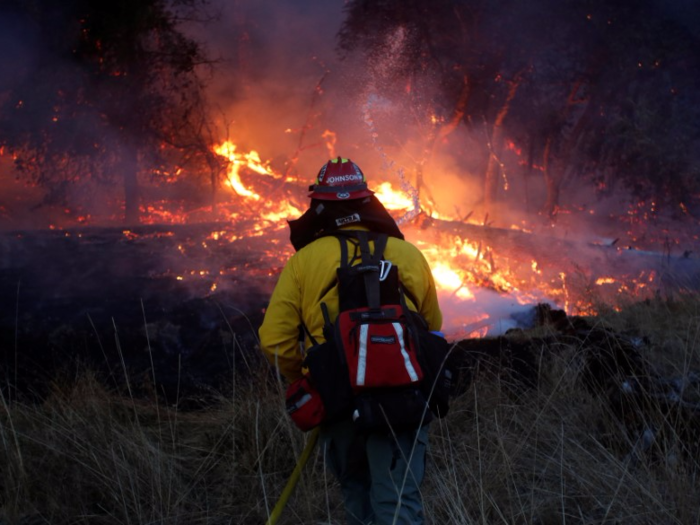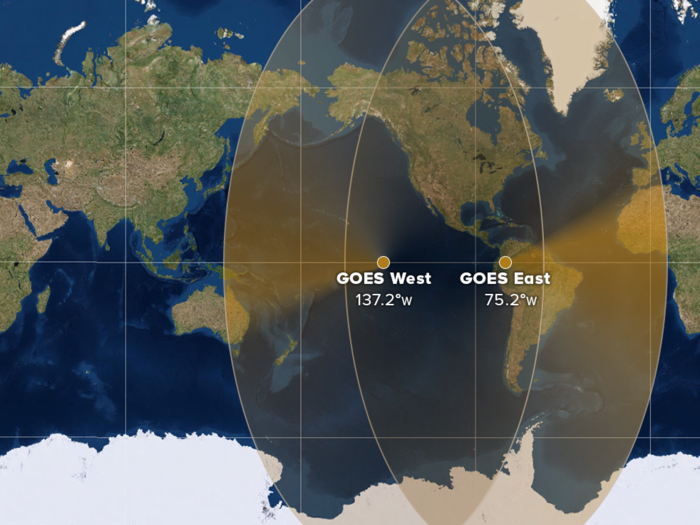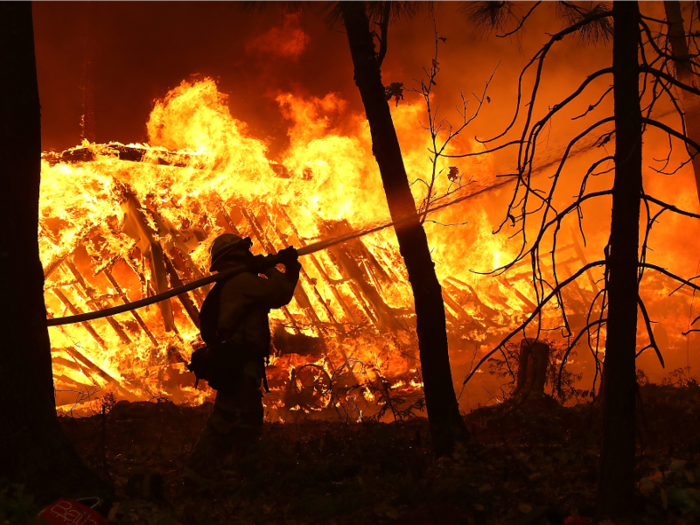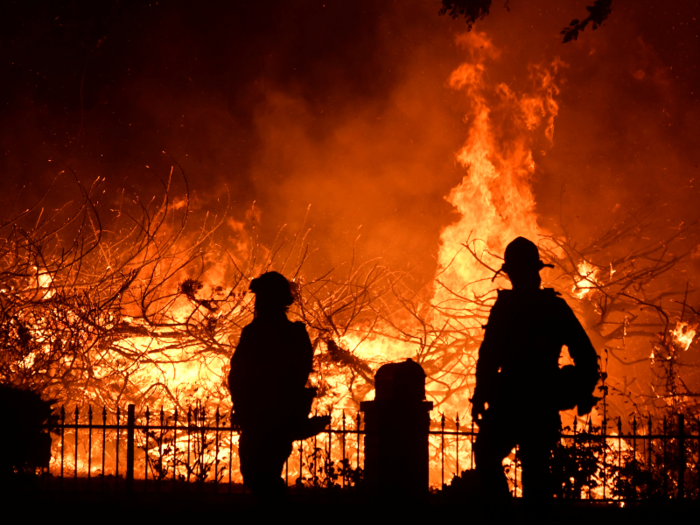- Home
- slideshows
- miscellaneous
- A look at how Descartes Labs is leveraging AI to alert fire managers of wildfires and decrease the damage on homes and habitats across the US
A look at how Descartes Labs is leveraging AI to alert fire managers of wildfires and decrease the damage on homes and habitats across the US
The rise and impact of wildfires

What Descartes Labs is doing to help stop wildfires

That's where Descartes Labs comes in, a startup launched in 2014 as a spin off of the government-run Los Alamos National Lab, Descartes Labs has gone through five funding rounds since May 2015, successfully raising a total $58.3 million, with the most recent series B round securing $20 million in October 2019.
On July 1, 2019, Descartes Labs officially launched its wildfire detector, which leverages satellites and AI to spot these dangerous, life-threatening fires.
The idea originated during the summer of 2018. That year, New Mexico was experiencing extreme drought conditions due to an uncharacteristically low level of snowfall the previous winter. As a result, wildfires popped up left and right.
"You really got the sense that [the fires] were bearing down on you," Clyde Wheeler, an applied scientist at Descartes Labs, told Business Insider.
Wheeler and some of his coworkers would often go running together in the mountains near their Santa Fe headquarters. One day, they came to the peak of a mountain and saw a huge blaze off in the horizon.
"That, I think, really got us moving," Wheeler shared. "We were already sitting on a whole bunch of satellite imagery, and we'd already developed this AI technology, so we decided to see what we could do to help. That ended up being this real-time wildfire detector."
Leveraging existing satellites

Descartes Labs' wildfire detector takes the images from two geostationary satellites, GOES-16 and GOES-17 (also known as GOES East and GOES West), launched by the National Oceanic and Atmospheric Administration (NOAA) in 2016 and 2018, respectively. GOES-16 and GOES-17 hover above Earth, providing a stream of high-resolution and infrared imagery every five minutes.
"These satellites see into the thermal infrared" — meaning they can show the Earth's temperature — "and since the fires are really hot, hotter than the surrounding area and hotter than any point in the recent past, they appear as really bright, distinct spots. They're going to stand out," Wheeler explained.
"Once we get an image," Wheeler said, "we start doing detection on it, start looking for fires in them. It takes nine minutes, from the point of the satellite capturing the image in space to us sending out an alert" if there is indeed a wildfire detected.
Each satellite remains above the exact same point on Earth at all times, meaning the pictures they take will always be of the same geographical areas. While GOES-16 and GOES-17 are positioned over different regions, their coverage overlaps. Together, they capture what's going on from New Zealand to the western coast of Africa, and from the Antarctic Circle to close to the Arctic Circle.
How AI comes into play

In order to ensure this tool correctly identifies a wildfire — and not something else — they had to create several different AI algorithms to filter out false alarms, like flares from the oil and gas industry, controlled agricultural burning by farmers, or giant fireworks shows, such as the one they saw in Fort Worth, TX this past Fourth of July.
The algorithms take into account a number of different factors: where big oil and gas refineries might be, the location of steel and copper mills, where wildfires typically start, the overall terrain, and more. They must all be in agreement that the bright spots they're detecting are, in fact, a wildfire.
One example of a possible false alarm was the 2018 Queens power plant explosion. The lights at LaGuardia Airport went dark, the sky turned a bright neon blue, and people wondered if the world was ending. While the satellites didn't know the answer about the fate of the planet, they did confidently declare that this hot spot was not a wildfire.
"It was actually a cool test [for the detector]," says Wheeler. "You could see it in the imagery, but our algorithms didn't detect a wildfire. "When the tool does spot a wildfire, Descartes Labs immediately broadcasts an alert to the LA Times who, in turn, reports it on their wildfire map. The detector can provide the exact latitude and longitude of the fire, which is crucial to taking action. Just a few short months ago, they did exactly this when they detected what's now known as the Kincade Fire in Sonoma County, CA, prompting the LA Times to release the first public notice about it.
The future of the Descartes Labs wildfire detector

So, what's next for Descartes Labs and their wildfire detector? In addition to alerting the LA Times, it's running a trial program with the New Mexico state government. Every time Descartes Labs detects a fire, the system sends a text alerting the state's fire managers, pinpointing the location and directions on how to get there.
The team wants to get this invaluable information into the hands of as many fire managers as possible, starting with the United States, then expanding to the entire area that GOES East and West cover. Eventually, they'd like to integrate images from other satellites, so they can help prevent incidents like the bushfires in Australia.
"It really is a project to do good," said Wheeler. "So we want to make sure that it's impact is maximized."
Wheeler rejects the view that AI has the potential to replace the human factor. The wildfire detector, he said, is here to, he said, "augment existing methods, to cast a better net that helps make sure fewer big fires slip through."
Popular Right Now
Popular Keywords
Advertisement